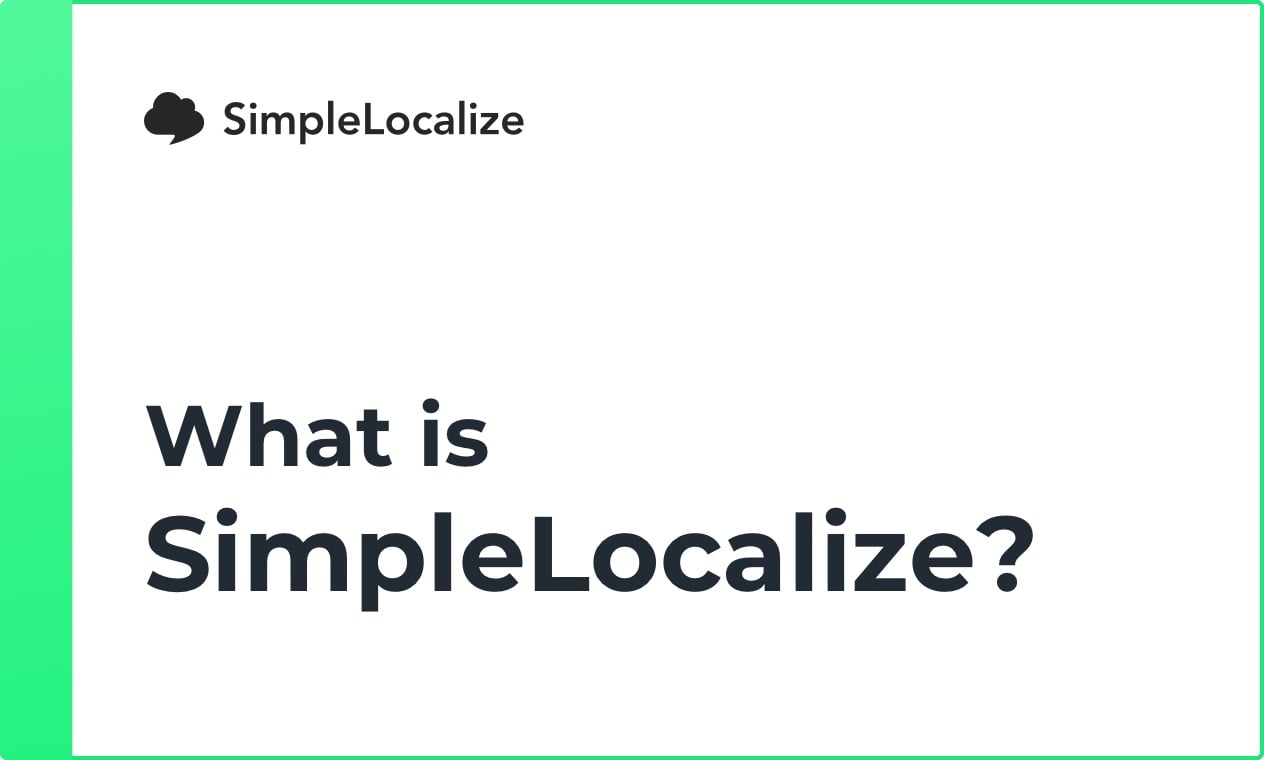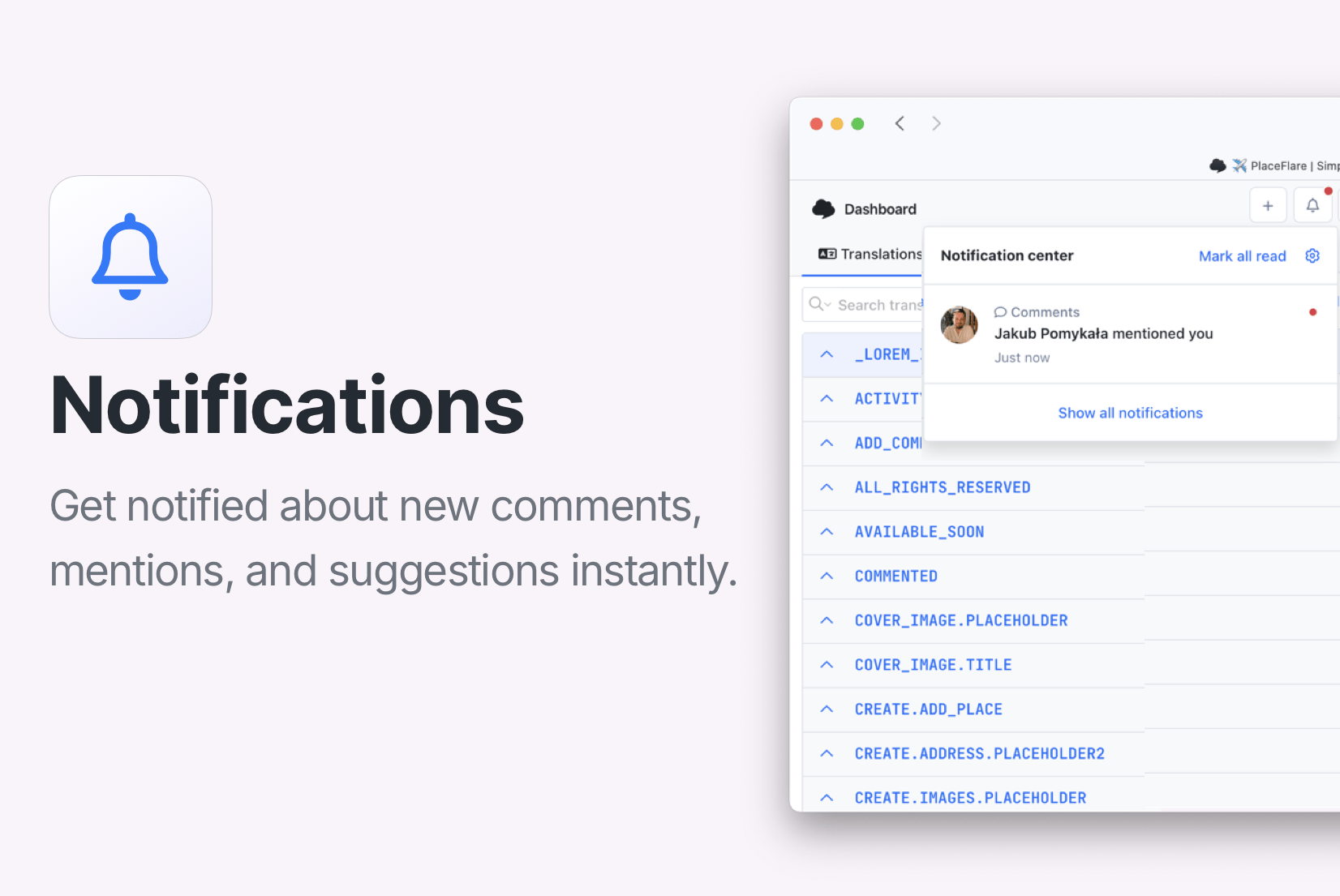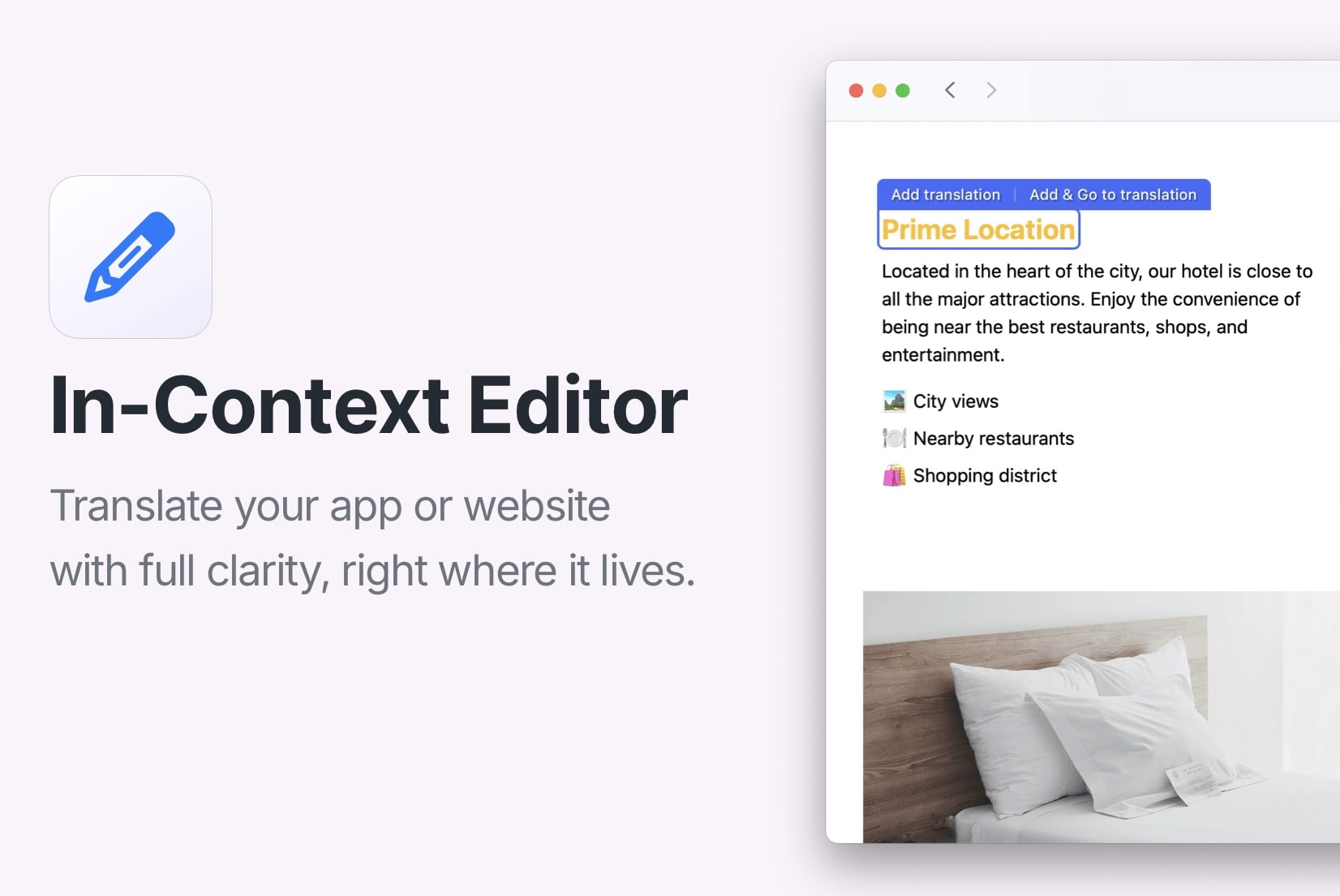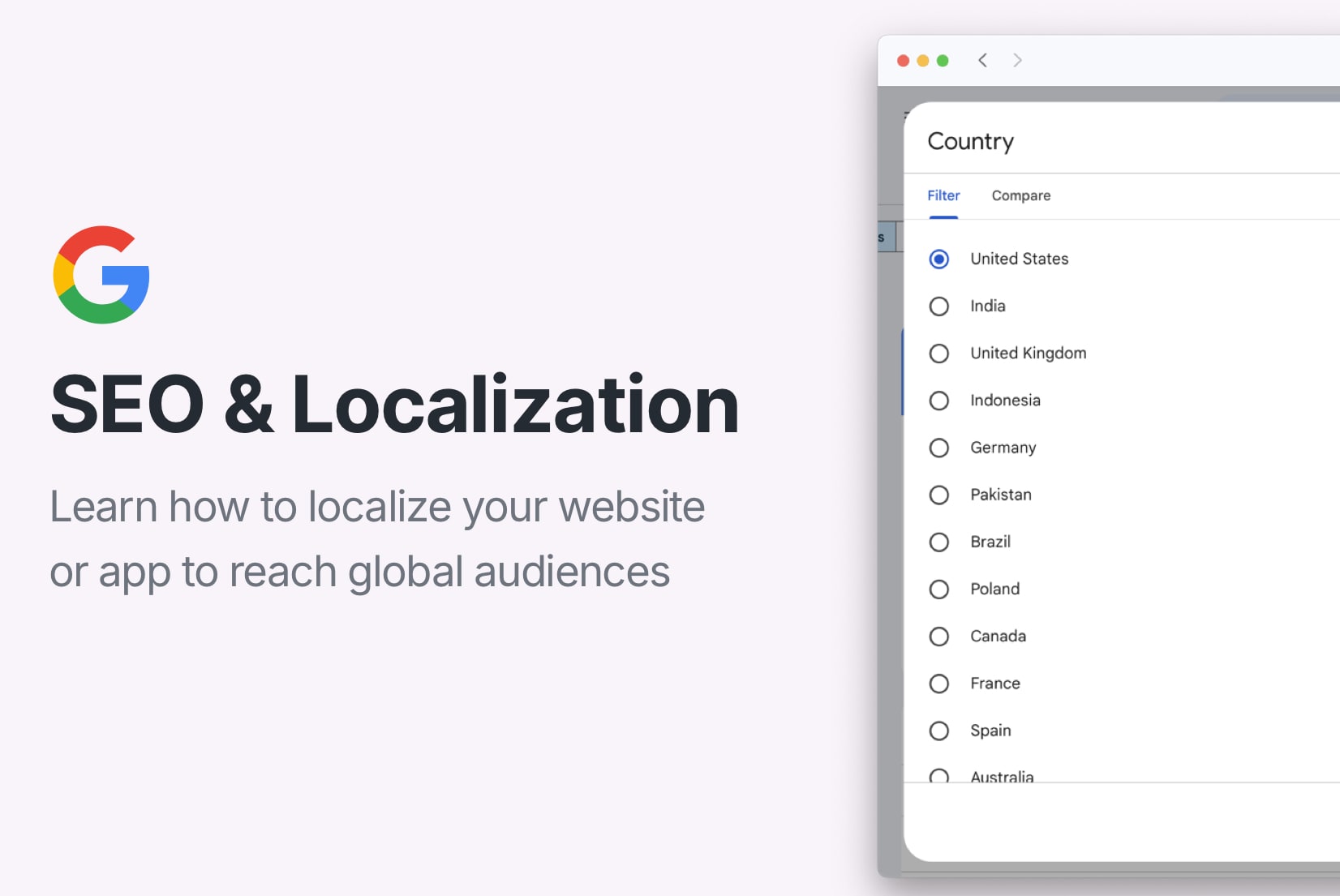Language vs Locale: What's the difference?
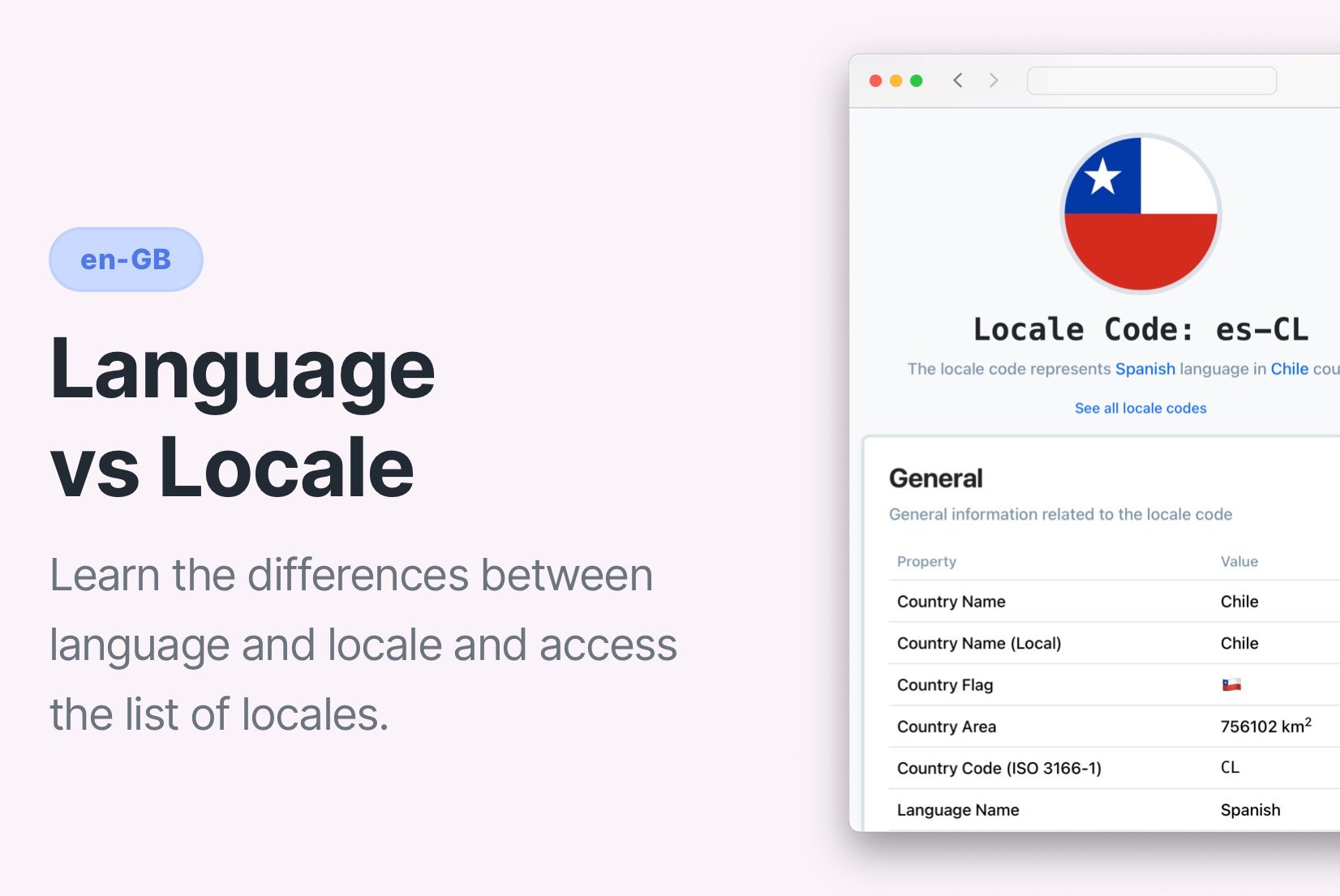
The translation is the process of converting a text or message from one language to another. In the context of translation, the terms "locale" and "language" are often used interchangeably, but they refer to distinct concepts. So, what exactly does locale mean, and how does it differ from language in terms of translating texts and adapting them to meet regional needs in different countries?
This article aims to answer these questions and explore the roles of locale and language in translating apps and software into different languages around the world.
If you are looking for a list of locale identifiers, you can find it in our Locale codes list and Language data list.
Difference between Language and Locale
Translating from one language to another is not as simple as it might seem. Two primary factors must be considered to create a complete translation: language and locale.

Language is the linguistic system used for communication. It encompasses vocabulary, grammar, and syntax. When translating, the primary goal is to convert words and sentences from the source language to the target language.

Locale, on the other hand, refers to the specific regional settings and cultural nuances that go beyond mere words. This includes aspects such as currency symbols, date formats, measurement units, and other cultural references that are specific to a region. For example, translating text for an American audience requires different considerations compared to translating for a British or Australian audience, even though the language in question might still be English.
What is a Locale?
In an era where digital globalization is on the rise, one of the most important aspects to consider when translating a product or app into another language is locale. What exactly does "locale" mean?
A locale involves cultural adaptation and tailoring content for specific audiences in different regions. It goes beyond literal translations to ensure that the content resonates with the target audience's customs, habits, and cultural context. For example, a joke that makes perfect sense in one culture might fall flat or even offend in another.
Examples of Locale considerations
- Date formats: The date format in the US is typically MM/DD/YYYY, while many European countries use DD/MM/YYYY.
- Currency: Prices in the US are denoted with a dollar sign ($) before the amount, whereas in many European countries, the currency symbol (€, £) follows the amount.
- Time: The US commonly uses the 12-hour clock format, whereas the 24-hour clock format is more prevalent in Europe.
- Measurement units: The US uses the imperial system (miles, pounds, gallons), whereas most of the world uses the metric system (kilometers, kilograms, liters).
How to deal with Locale?
Translating software and apps involves more than just converting text; it requires an understanding of regional specifics. Here are some considerations to keep in mind:
- Measurements and Formats: Adapt measurements like currency, date, and time to the local conventions.
- Document Formatting: Consider differences in document creation and formatting.
- Local Expressions: Be aware of regional sayings and idiomatic expressions that might not translate directly.
For instance, the word "locale" can be translated to "Lokalität" in German or "locação" in Portuguese, but in Russian, there may be no direct equivalent, requiring a descriptive approach instead.
Technical side of Locale
In the code of an application or webpage, a locale identifier is used to specify the language code and region where the language variation is used.
For example, English is spoken in different parts of the world is adapted using locale identifiers such as en-GB for the UK, en-AU for Australia, or en-US for the United States.
Below you can see an example of locale translations of the word "computer" to Spanish for different regions:
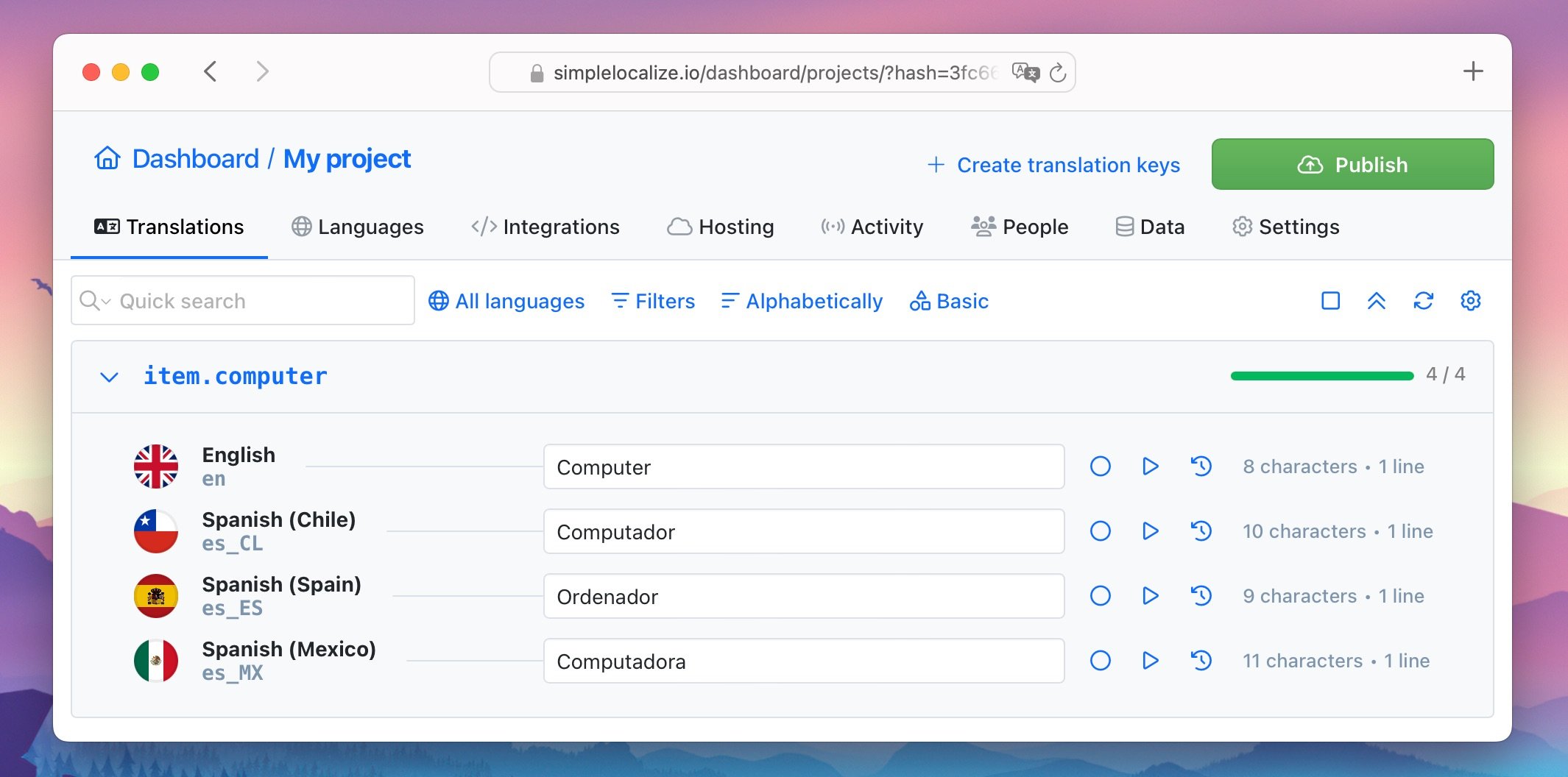
Example locale identifiers
The format of the locale identifier can vary depending on the environment used in the project. For instance, Java uses underscores (_) instead of hyphens (-), which are commonly used in other environments.
Standard Locale format: language-REGION
es-ES (Spanish - Spain)
es-CL (Spanish - Chile)
Alternative Locale format: language_REGION (used in environments like Java or Windows)
language_REGION
es_ES (Spanish - Spain)
es_CL (Spanish - Chile)
List of common Locale identifiers
Here are some common locale identifiers for different languages and regions:
- en-US: English - United States
- en-GB: English - Great Britain
- es-ES: Spanish - Spain
- es-MX: Spanish - Mexico
- fr-FR: French - France
- fr-CA: French - Canada
- de-DE: German - Germany
- de-AT: German - Austria
- pt-BR: Portuguese - Brazil
- pt-PT: Portuguese - Portugal
- it-IT: Italian
- zh-CN: Chinese - China
- zh-TW: Chinese - Taiwan
- ja-JP: Japanese - Japan
- ko-KR: Korean - South Korea
For more locale identifiers, you can refer to our Locale codes list and Language data list.
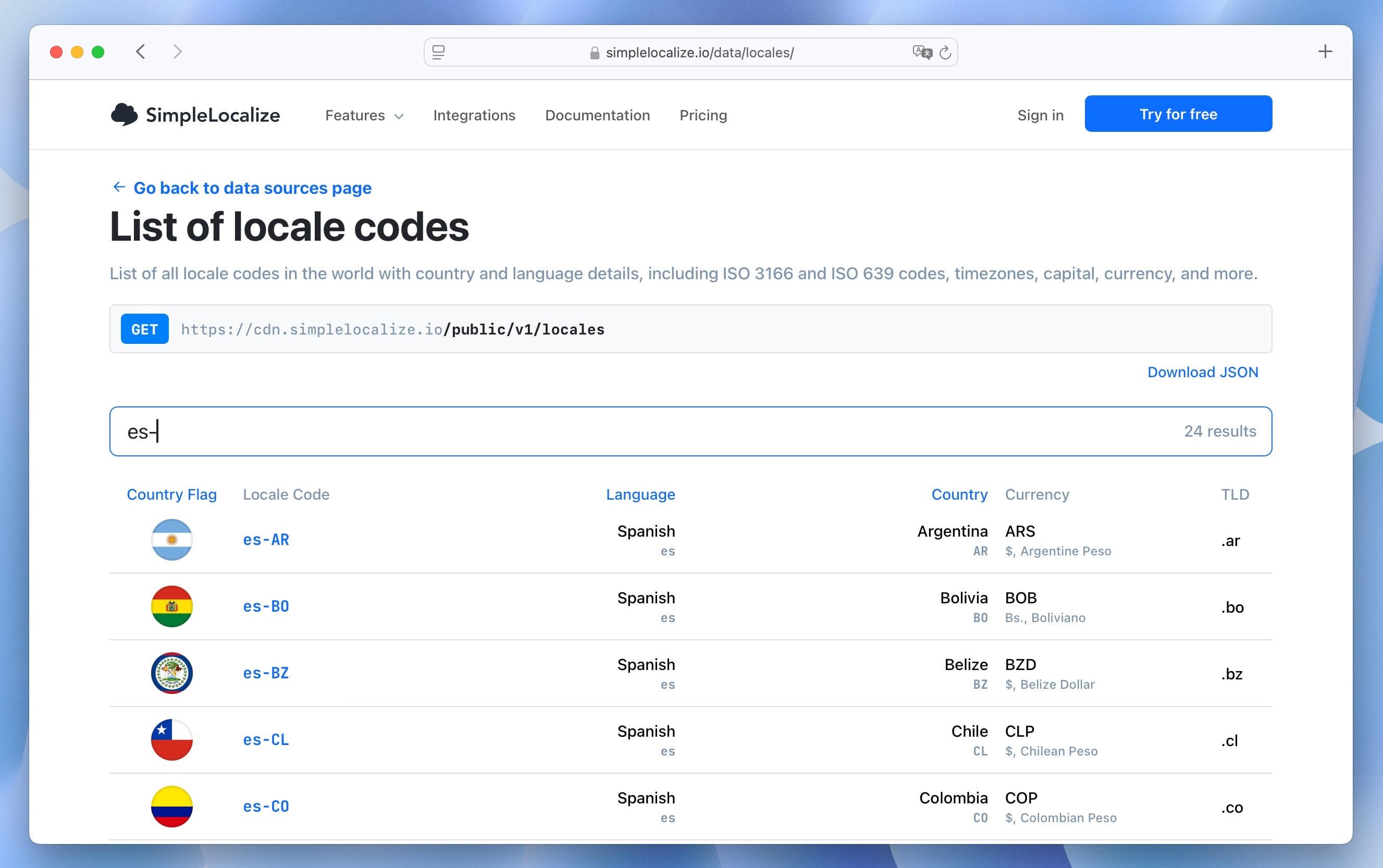
Conclusion
Translating apps and software for a global audience can be complex. A translation that ignores the cultural and regional context can lead to misunderstandings or even offend the target audience. Therefore, understanding the role of locale is crucial in the translation process to create meaningful and culturally appropriate content. By considering both language and locale, developers and translators can ensure that their products resonate with users worldwide.
